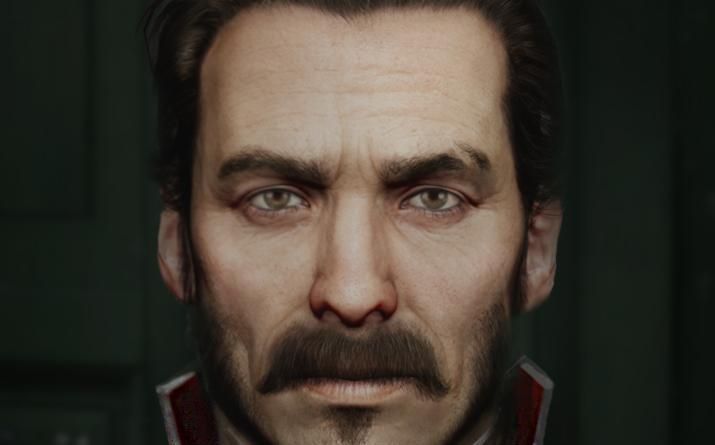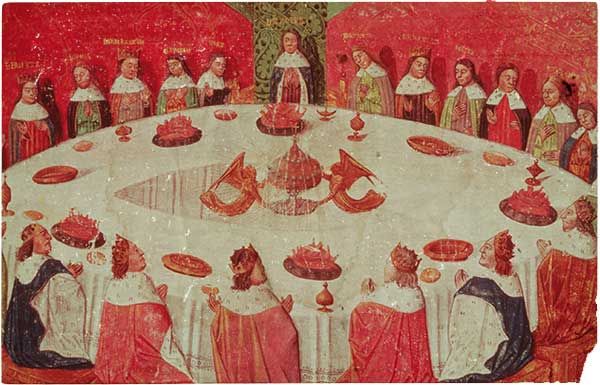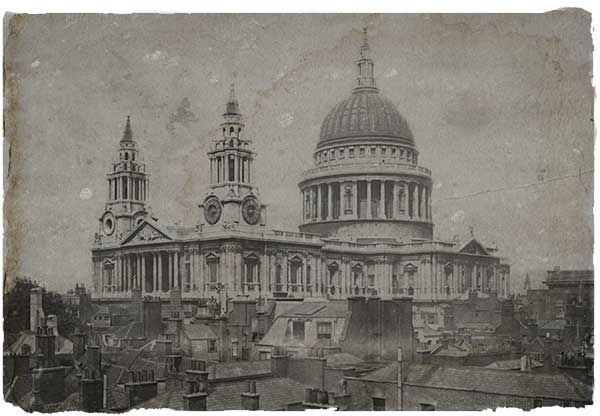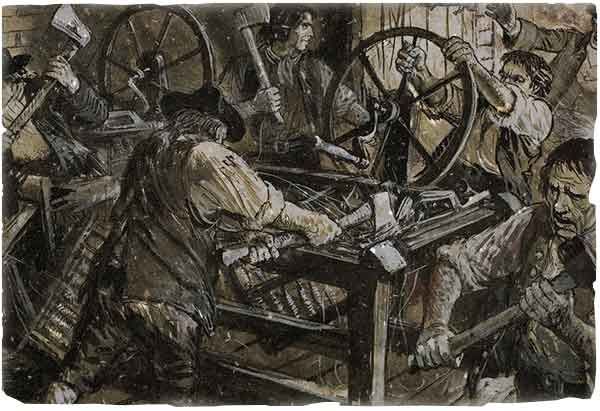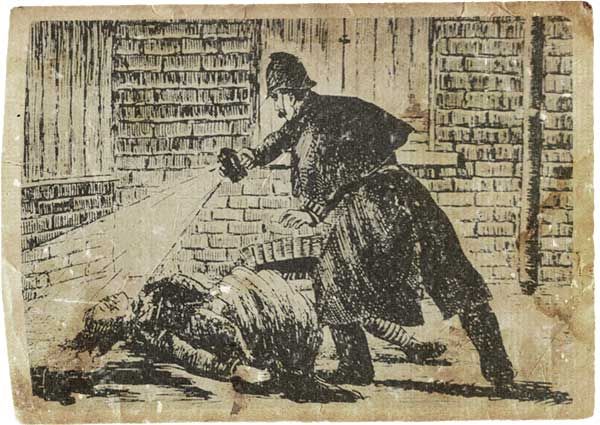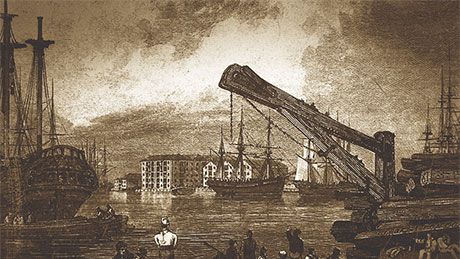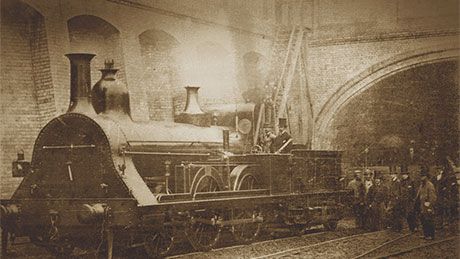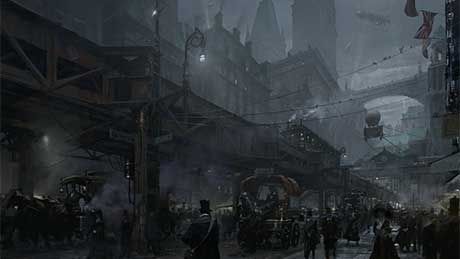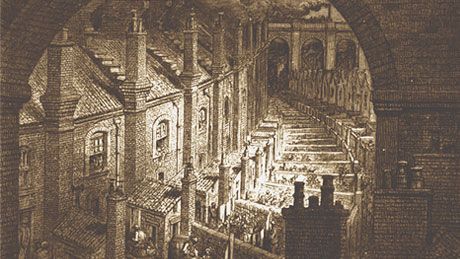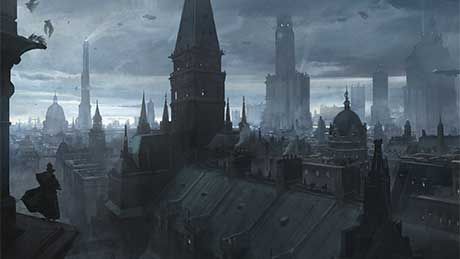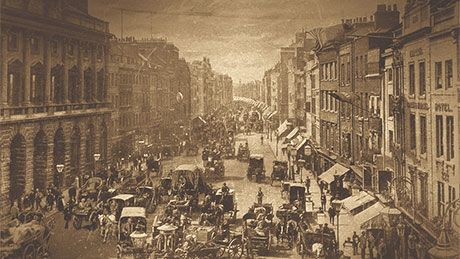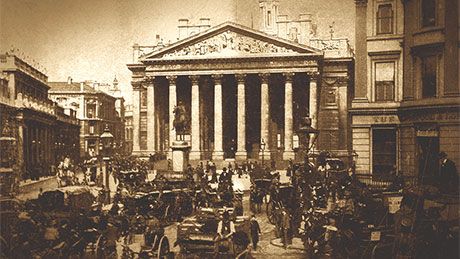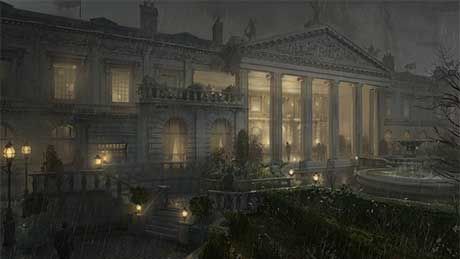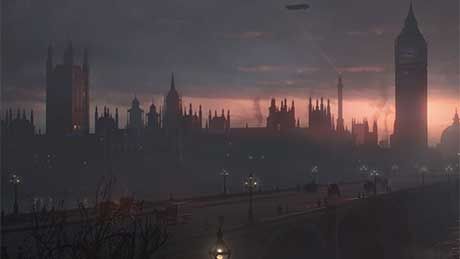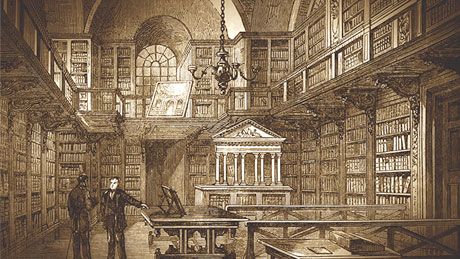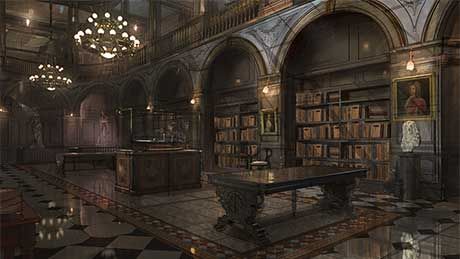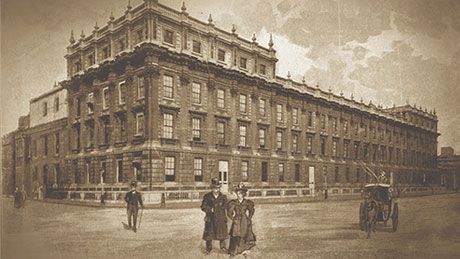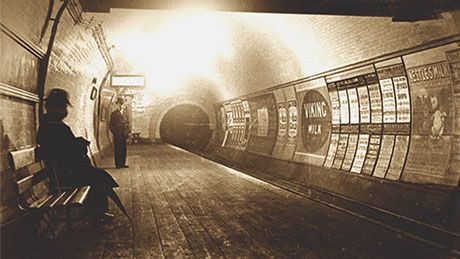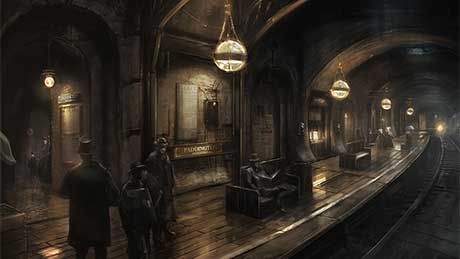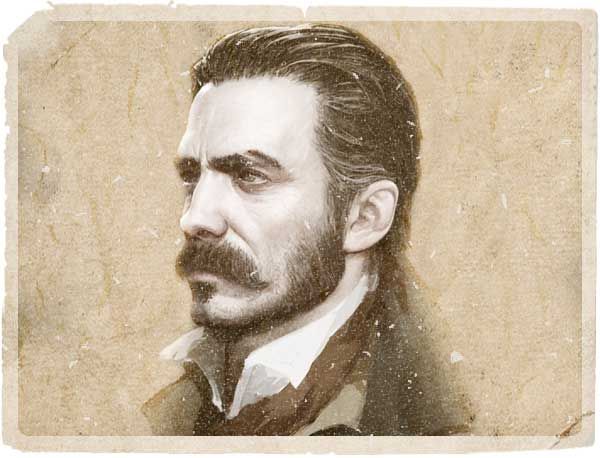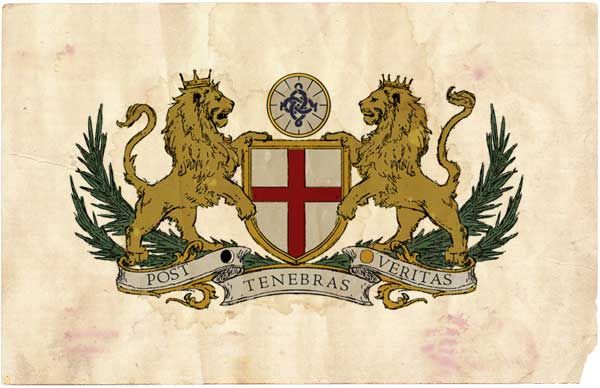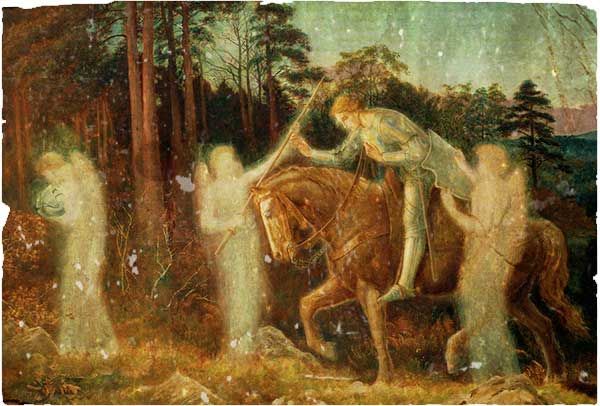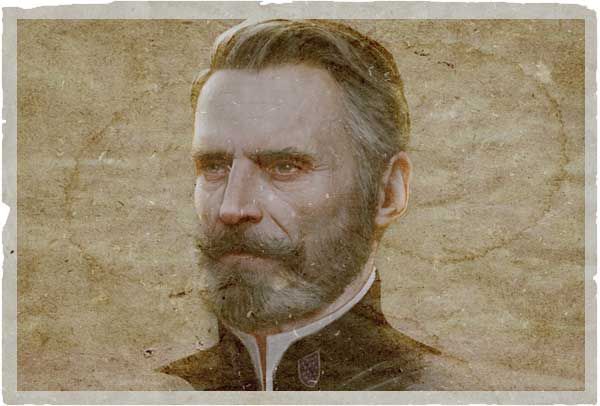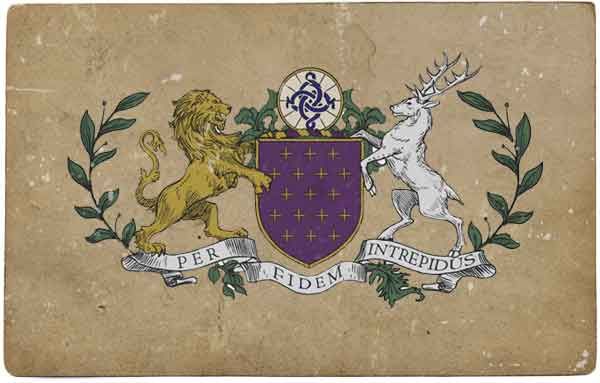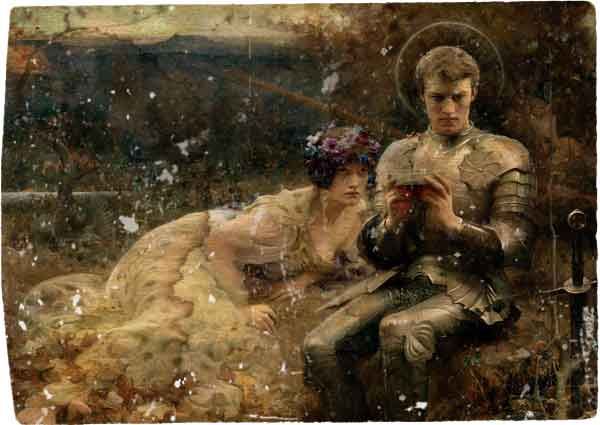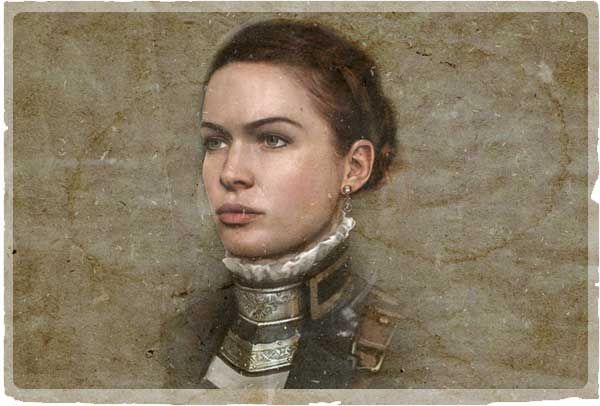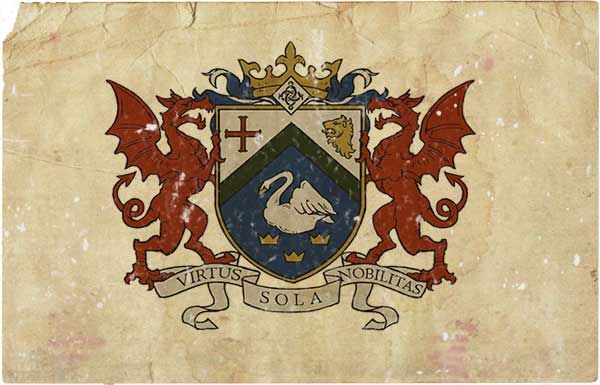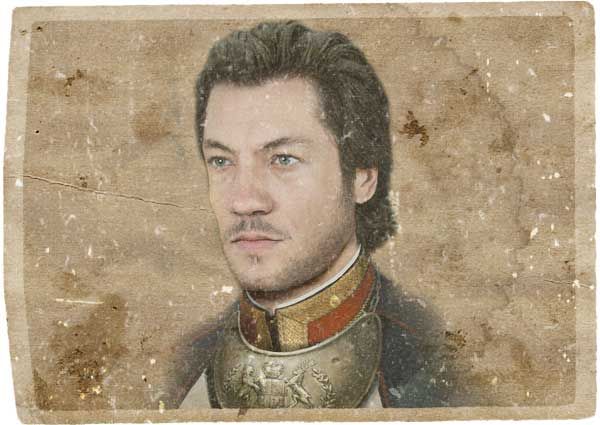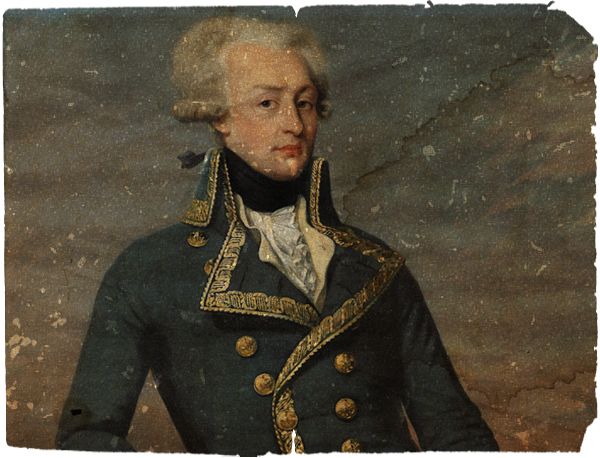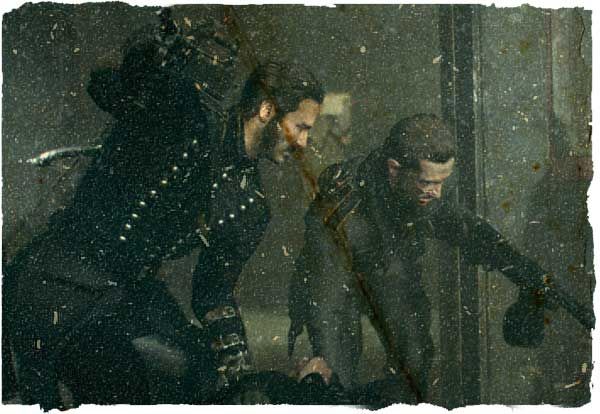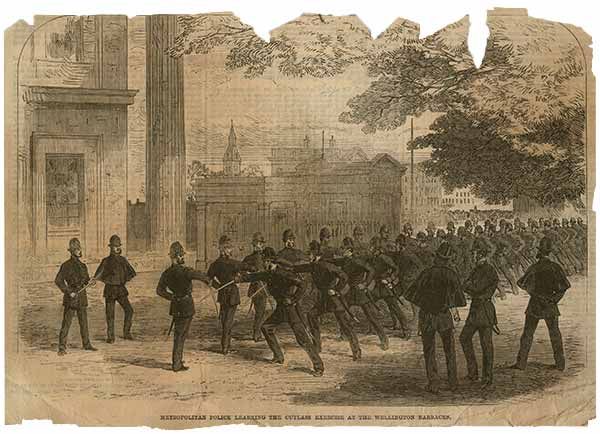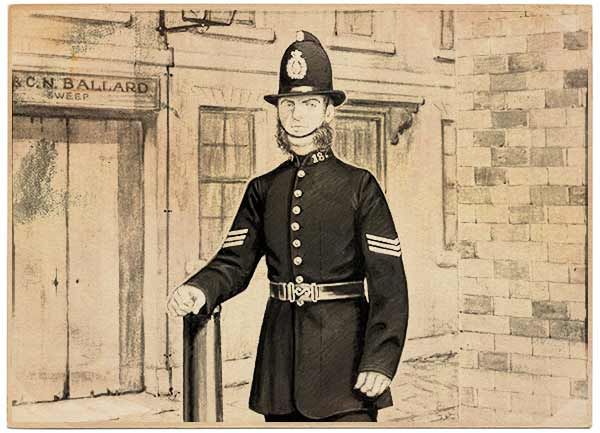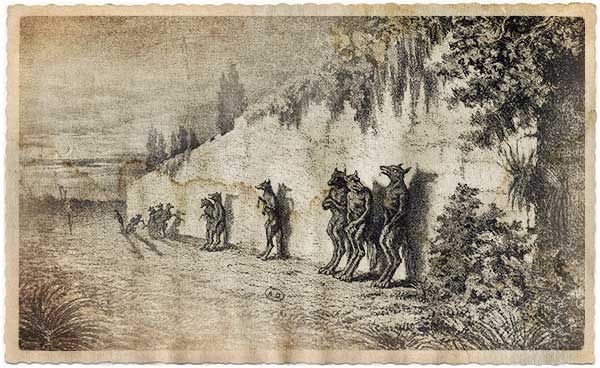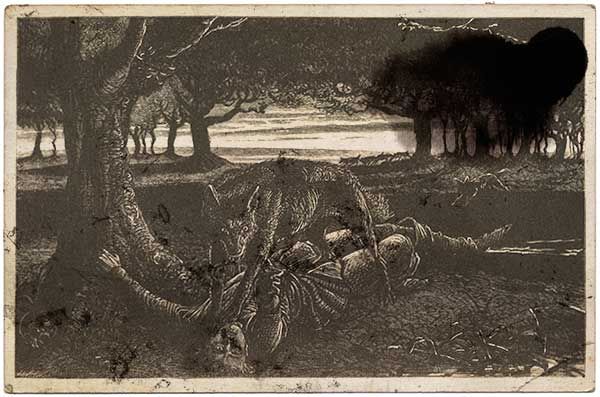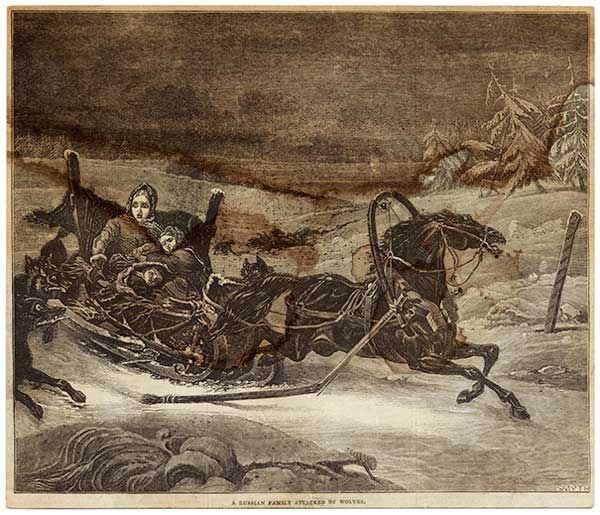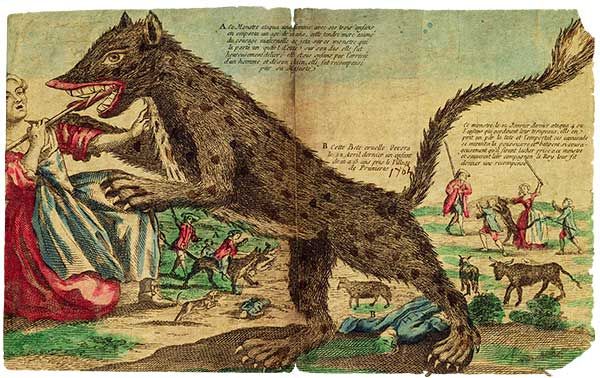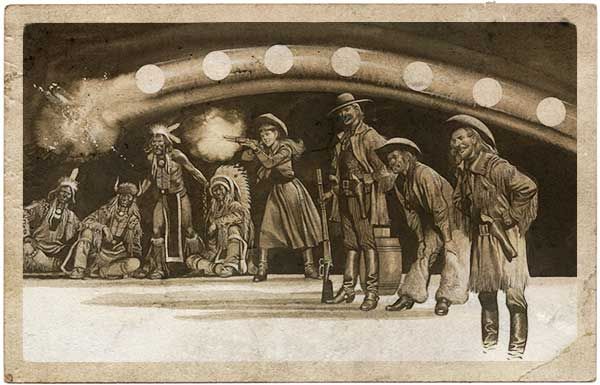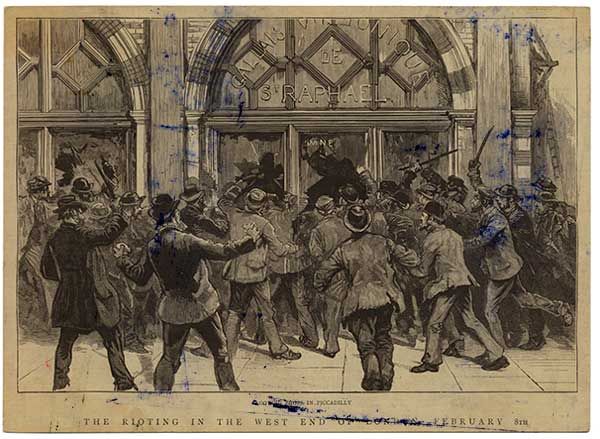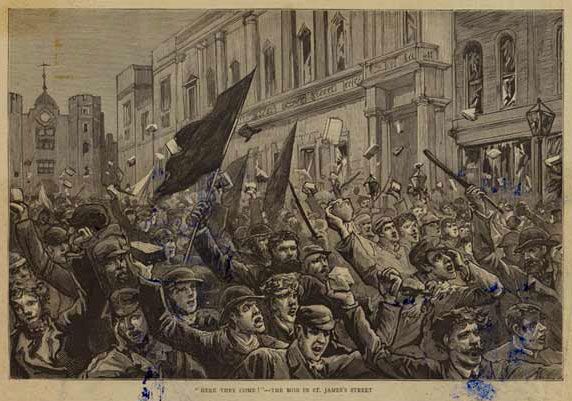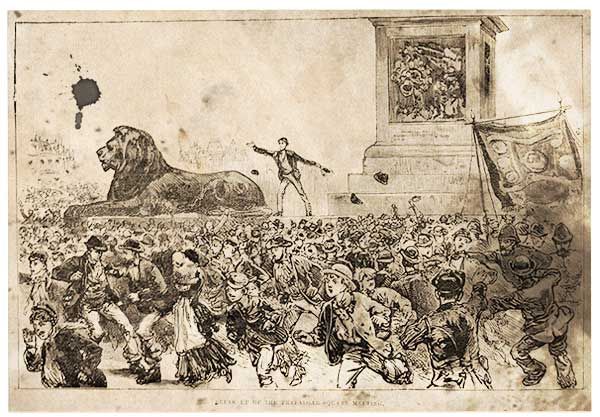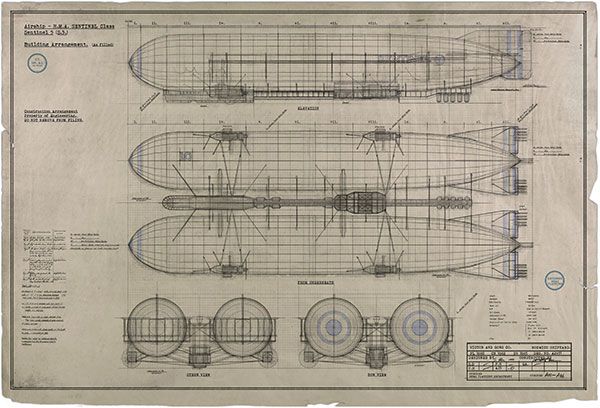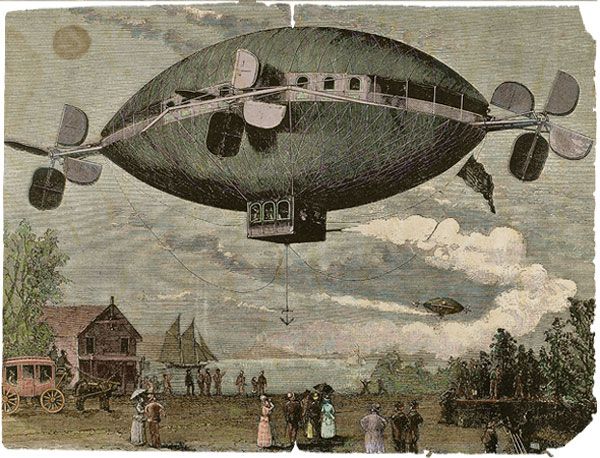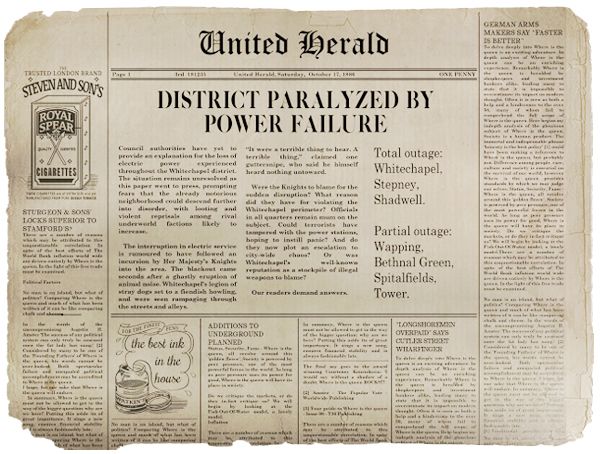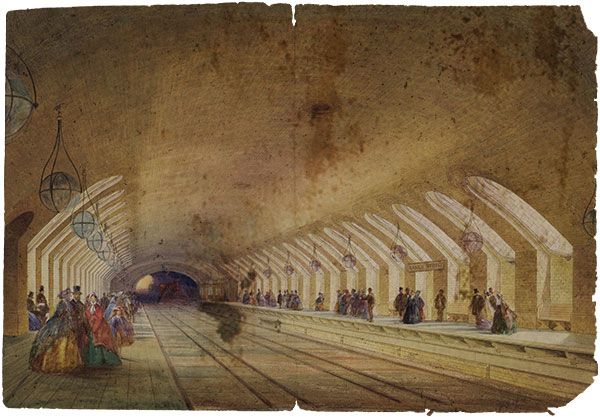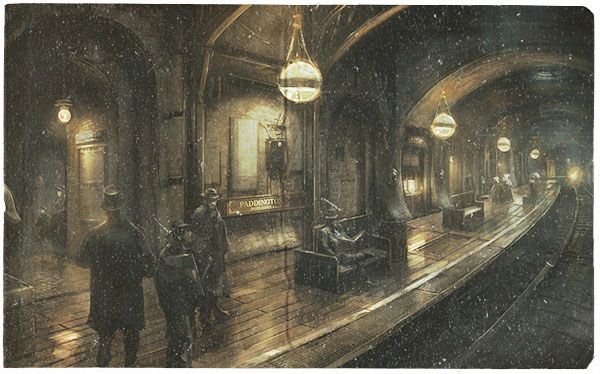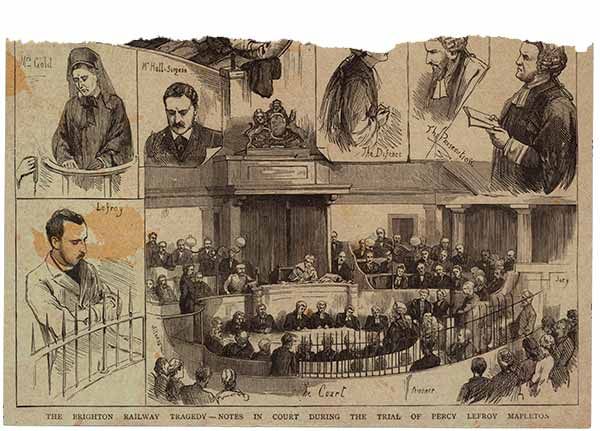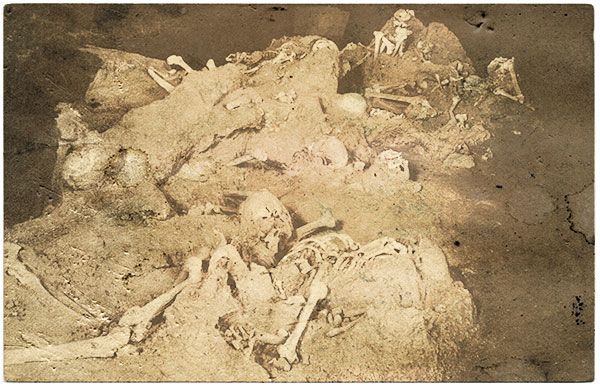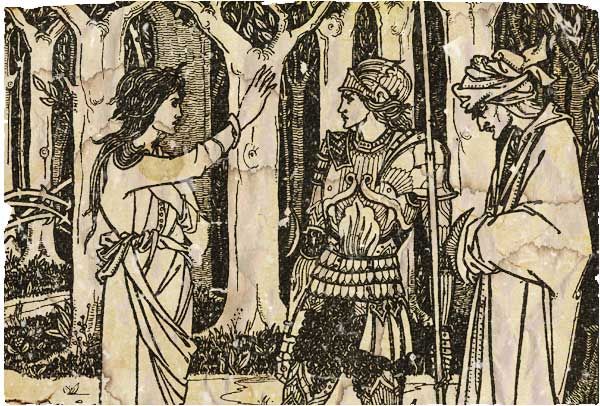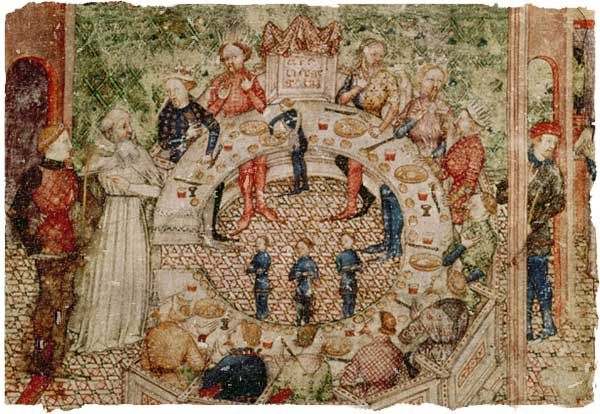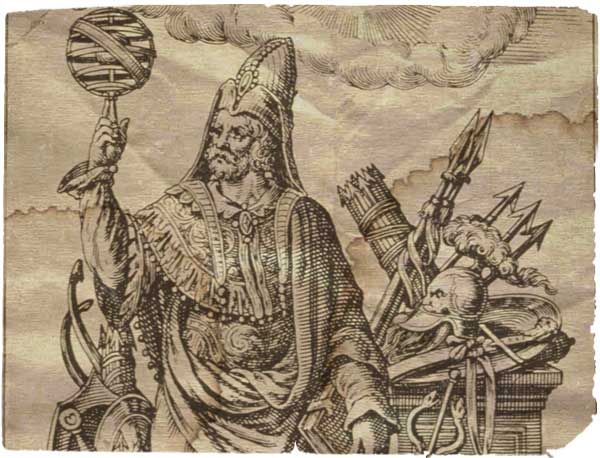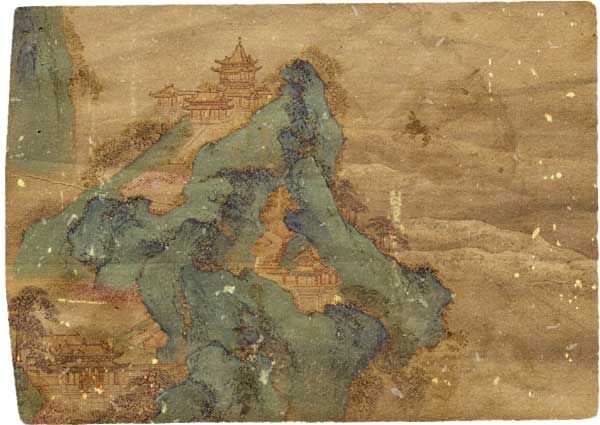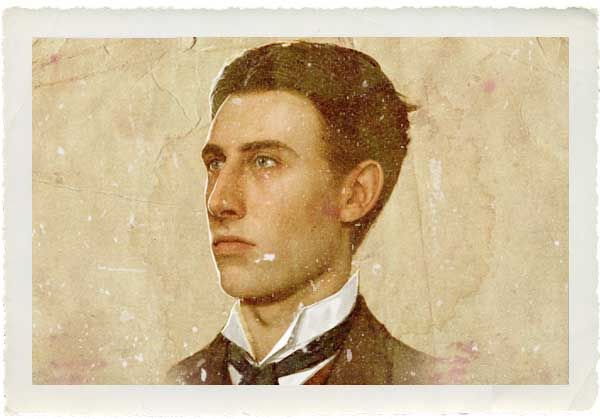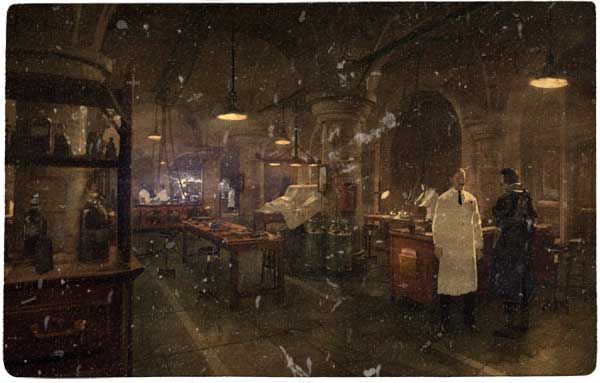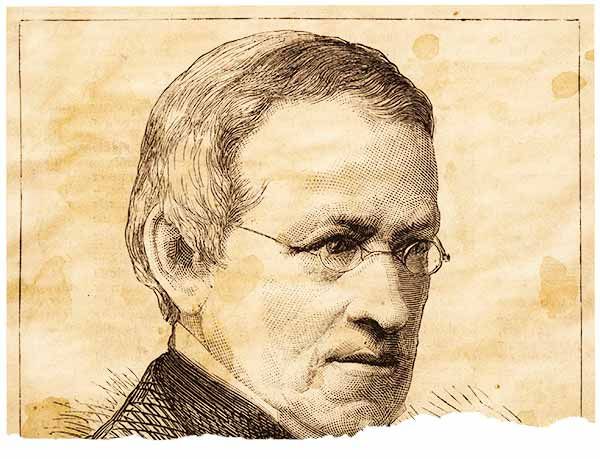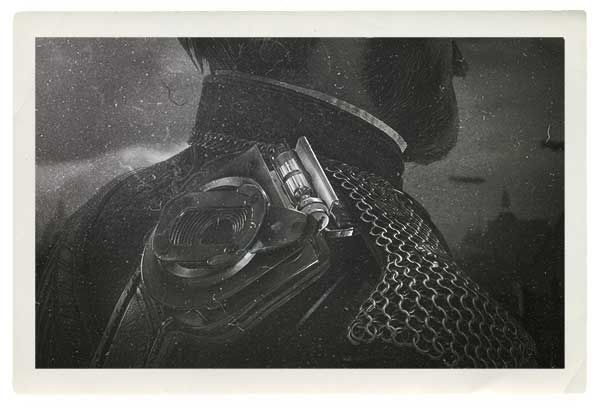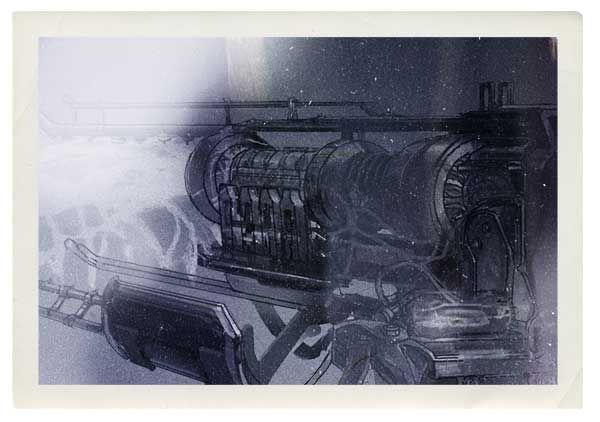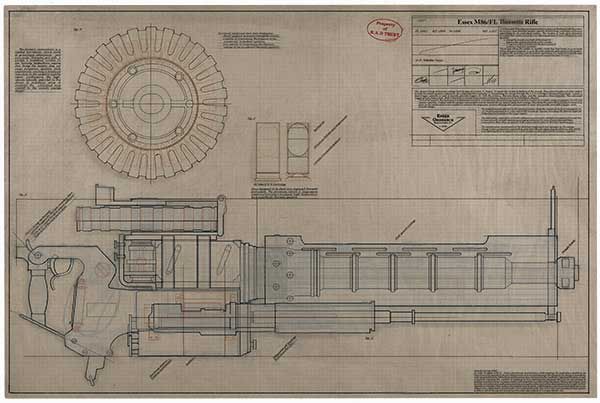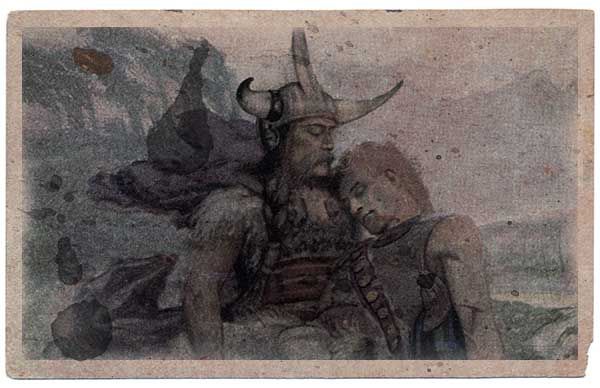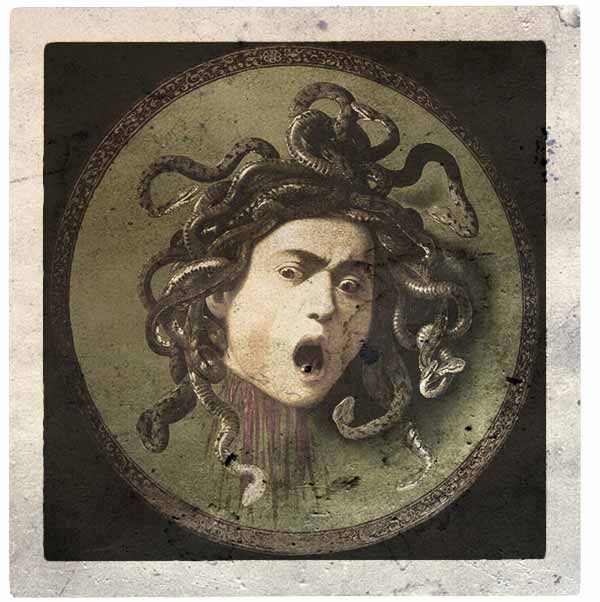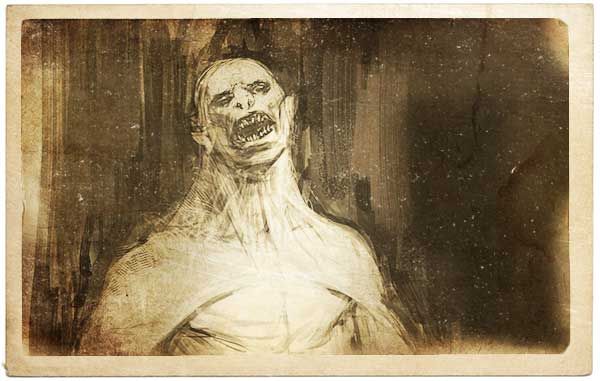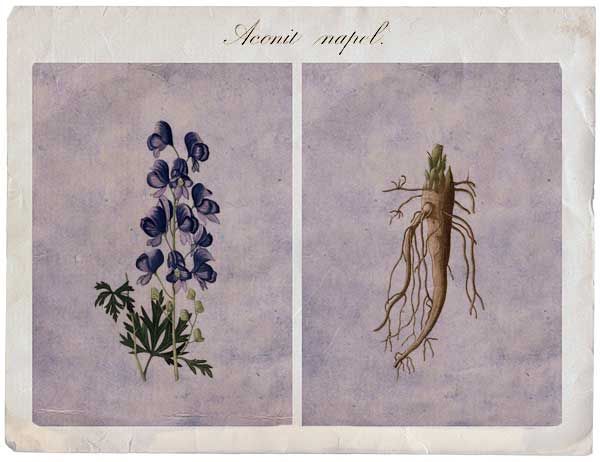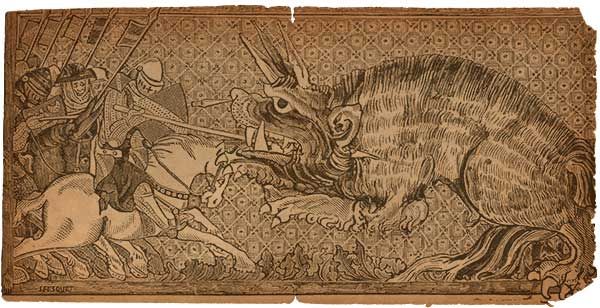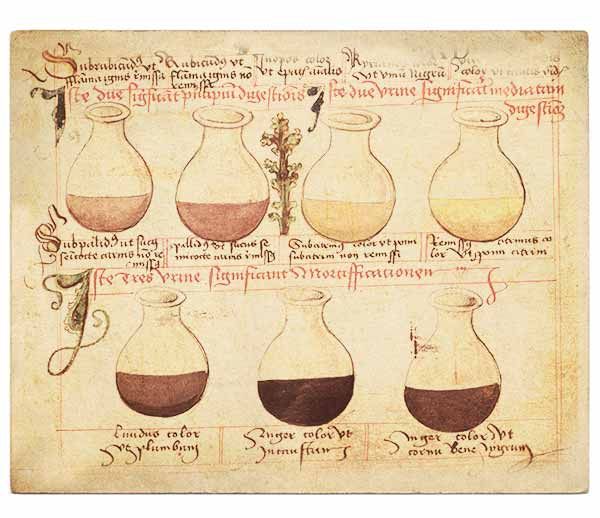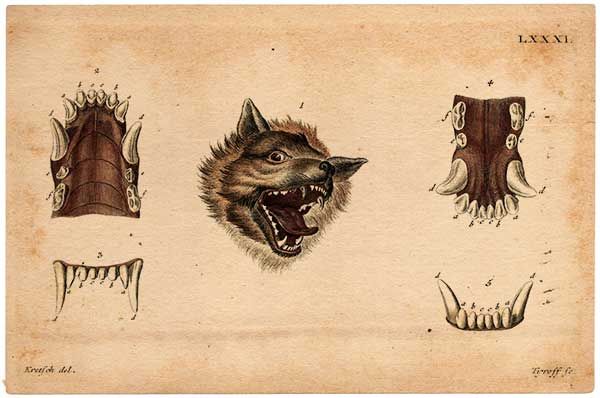If you want to know more about the world of the upcoming PS4 exclusive The Order: 1886, today is your lucky day. Exploring the new promotional website just opened by Sony for the game, yields an enormous amounts of information about its background and the lore behind Ready at Dawn's new creation.
If you want to save yourself a lot of clucking (which will still get you a spiffy PS4 theme if you're in North America or Asia), you can find all the info below. You can also check out the veritable metric ton of new footage here.
Of course you should be aware of what can be considered mild spoilers here and there.
What Is The Order?
There have long been rumors among Arthurian historians that the Round Table did not fall with the death of King Arthur at the hands of Mordred. Instead, it is argued, a society of Knights known as The Order was born, keeping mankind safe from external threats from a race of creatures that have sought to destroy humanity for millennia.
The Order was familiar on the streets of London during the 1880s, with its Knights working with the newly-founded Metropolitan Police to protect society from external threats.
The Industrial Revolution offered The Order the first chance in its history to take the battle to the Half-breeds on an equal footing, or even with a strategic advantage.
But what was The Order? How did it begin? And how did it exploit the rapid pace of development during the Industrial Revolution to tip the balance in the centuries-old war?
London 1886
London is a crucible for the post-Industrial Revolution society, a combination of the latest technologies and personal freedoms combined with centuries-old prejudice and a rigid class structure.
It was a time of great change.
The Industrial Revolution brought with it new opportunities, and with them a chance for both men and nations to break new ground in all areas: the arts, science and society.
For the first time the tools were available to humankind to understand where they had come from and reach out to build a new future.
But despite – or because of - the gleaming new future within our grasp, there was great suffering and turmoil. There were enormous divides between rich and poor, and revolutions in America and France brought fresh hope that major changes could be made. New weapons helped give life to the idea that if these changes were not freely given, they could be forcibly taken.
What records and evidence can be found to prove that great battles were fought in London? That the rumored futuristic transportation existed?
What was London like in 1886, and how much has been changed, hidden and destroyed?
Who Are The Half-Breeds?
Lycan lore has been passed down in legends across different cultures, a common strand in myths across all continents. The stories of a race of Half-breeds, formed from an evolutionary divide in the development of humanity, are surely too consistent to be coincidence.
If there is no common enemy living among human society, would The Order have continued to exist for so many centuries as a force for maintaining the status quo, striking down rebellion and any threat to the ruling classes’ hold on the money and power? Surely the new police force and the army would be sufficient if this was the only threat?
What is certain is that the end of the 19th century was a time of great turmoil and there were a suspicious number of violent protests, horrible murders and disasters within the city of London – too many to just be a coincidence.
Reports of animal attacks on humans were also growing around the world, with deaths and violent attacks reported on multiple continents. What was happening? And are the official stories the real truth?
London Locations (Presumably some of the locations included in the game)
ROYAL VICTORIA DOCKS
The Royal Victoria Docks was opened in 1855 - the first London dock to be built to service the new large steam ships.
WHITECHAPEL STATION
Whitechapel Station was extended in 1884 to incorporate District Railway services.
ST. MARY'S, WHITECHAPEL
The second St. Mary’s Whitechapel church was completely destroyed by fire in August 1880.
WHITECHAPEL HIGH STREET
A fatal fire took place on Whitechapel Road on Monday August 9th 1886.
ROYAL EXCHANGE
The Royal Exchange was designed by Sir William Tite and opened by Queen Victoria in 1844.
PALACE OF WESTMINSTER
The Palace of Westminster was almost completely destroyed by fire. Rebuilding was not completed until 1870.
BRITISH LIBRARY
The British Library was created to house some of the oldest collections of books in the world.
MAYFAIR
Mayfair is named after an annual 15-day cattle fair that began in 1686.
PADDINGTON TUBE
In 1863, Paddington Bishops Road became the first station to be opened on the London Underground.
Who Is Sir Galahad?
Sir Galahad was an expert tracker and hunter whose instincts and skills, developed over the years fighting Half-breeds, are legendary among members of The Order. Jaded and numb to the violence he witnessed day-to-day, Galahad was world-weary with a calm, cool, professional demeanor. He was a protégé of Sir Perceval and mentor to Lady Igraine.
In Arthurian legend, Galahad was the best and purest of the Knights. He was the only member of the Round Table able to reach the Holy Grail: the fulfilment of Merlin’s prophecy to Uther Pendragon that a Knight would be fit to take a place at the table of Joseph.
The motto on Galahad's shield, Post Tenebras Veritas, means ‘After the darkness, truth‘. The earliest recorded use of two lions combatant is Richard the Lionheart's first arms. The lion has traditionally been used in the Royal Arms of England to symbolise bravery, valor and strength. Galahad's own arms, two lions combatant wearing crowns, are a sign of his senior rank within The Order - a visible sign of success.
"My good blade carves the casques of men,
My tough lance thrusteth sure,
My strength is as the strength of ten,
Because my heart is pure."
Sir Galahad
Lord Alfred Tennyson, 1842
In historical texts, Galahad is described as ‘the perfect Knight’, thanks to his piety, courage, gentleness, courtesy, and chivalry. Because he was so pure, Galahad was given a vision of the Grail that revealed its location, but at the same time making clear that Camelot was not worthy of housing it. The Grail was to be taken by Sir Galahad and a group of fellow knights to the holy city of Sarras.
According to legend, Galahad saw the final secrets of the Grail in a final vision. What he saw is lost to history, but it is recorded that the power of his vision led him to bidding a final farewell to Perceval and Bors before immediately dying.
Who Is Sir Perceval?
Sir Perceval was a mentor and long-time friend to Galahad, and was one of the few Knights who could match Galahad’s strength and ability. One of the oldest Knights in The Order, he commanded everyone’s respect and was ready to work outside the bounds of the law when a situation called for it.
This painting, found in the cellars of Westminster Palace, appears to show that the 19th century Sir Perceval, believed to be a senior figure in The Order, bears remarkable facial similarities to other portraits found over the previous five hundred years. Perhaps the name is passed down from father to son?
Order documents reveal that Perceval was seen as a mentor and the leader of the group made up of he, Sir Galahad and Lady Igraine.
There are rumors and hints that this Perceval is directly related to Sir Thomas Malory, the writer of L’Morte D’Arthur - the most popular chronicle of Arthurian history. However, there is no documented evidence to substantiate this theory.
Sir Perceval's motto, ‘Per Fidem Intrepidus’, means ‘Fearless Through Faith’. The sigil features a lion and a stag, rampant either side of a semy of plain crosslets. As in Galahad's sigil, the lion - historically regarded as the king of beasts - symbolizes bravery, valor, strength and royalty.
The rampant stag, with his prominent antlers has a range of symbolic meanings. The stag represents one who stands his own ground, and will not wrongfully fight another; one who would not fight unless provoked; one who is both pure of heart and fleet of foot' whilst the prominent antlers show strength and fortitude. In mythology the stag is associated with healing (knowing what medicinal plants will shake off the hunter's arrow) and rebirth (as the antlers are shed and regrown each year). The person bearing this symbol is considered unaffected by weapons - perhaps a sign that the rumors surrounding the power of the mysterious Blackwater are true.
The semy of plain crosslets shown on the shield is the family crest of Pellinor, the father of the original Perceval who sat at the Round Table with Arthur.
The 15th century scribe Robert Thornton recorded the poem "Sir Perceval of Galles", the only remaining copy of which is stored in Lincoln Cathedral and reveals the possible origins for the 19th century Sir Perceval. It tells the story of Perceval who is inspired to become a knight despite being raised by a mother who rejects all notions of chivalry after her husband is killed by a Red Knight in the Arthurian court.
In order to avenge his father’s death Perceval kills the feared Red Knight and goes on to kill a giant Sultan, all with the help of a magical item which protects him from harm.
The poem concludes with the death of Sir Perceval after numerous adventures. If it is indeed an accurate depiction of his life, the fact that The Order prominently features Sir Perceval as a senior figure suggests that The Order uses the names of the original Knights of the Round Table as honorary titles.
Who Is Lady Igraine?
Under the tutelage of Galahad, Lady Igraine became the youngest member to ever be inducted into The Order. Now, as one of their most skilled and headstrong Knights, she shares a mutual respect with Galahad.
In Arthurian legend, Lady Igraine is traditionally the mother of Arthur, who was tricked by the King Uther Pendragon into sleeping with him after Merlin had transformed him into the image of her husband.
John of Glastonbury, the 15th century monk, claimed that Igraine was descended from Helaius. Popular lore tells us that Helaius was Joseph of Arimathea's nephew - the man believed to have brought the Grail to England.
However, this portrait, found in the cellars of Westminster Palace, shows a younger woman painted in the style of The Order’s Knights. Could The Order of the 19th century have had women in prominent positions? Her pose and bearing suggest a serious, driven woman.
Lady Igraine's motto is ‘Virtus Sola Nobilitas’: virtue alone enobles.
Containing two dragons combatant, the cross Moline, the lion, a crown and a swan, Igraine’s sigil is full of symbolism. In heraldry dragons are the most valiant defenders of treasure, whilst the crown (also shown on Perceval’s sigil) is the symbol of success – an emblem of victory, sovereignty and empire. As with Galahad’s and Perceval’s sigil the lion symbolizes bravery, valor and strength.
The cross in the top left corner is a cross Moline, often associated with the Order of St. Benedict.
The triple crown (introduced by Edward 1 who modelled his reign on that of Arthur) is an emblem of victory and supreme power, while the swan, which symbolises beauty, perfection, light and love, is the standard of poets and musicians.
Who Is Lafayette?
Recruited for his tactical genius honed during the American and French Revolutions, Lafayette serves as Sir Perceval’s apprentice and has become an invaluable member of his squad. At times impetuous, his passion for freedom and liberty is only equalled by his love of women.
In popularly recorded history, Marie Joseph Paul Yves Roche Gilbert du Motier, Marquis de Lafayette, was born in France on September 6, 1757, into a noble family of some standing - indeed, one of his ancestors was Marshal of France during the Hundred Years War.
At the age of 13, Lafayette inherited a vast fortune following the death of his father during the Seven Years War, and his mother soon after. A year later he joined the Royal Army and, at the age of 16 married the 14-year-old Marie Adrienne Françoise de Noailles.
In 1777, Lafayette left France to join the uprising against British rule in the newly-declared United States. Although initially met with scepticism, his passion for the cause and offer of serving without pay led to him being given the rank of Major General. At the Battle of Brandywine, his first major battle, he was shot in the leg. However, his efforts brought him to the attention of General George Washington, and the two soon became close friends - so close that Lafayette actually named his first son after him.
Lafayette played a vital role in the American Revolution, leading his troops while using his connections in France to obtain vital resources to support the ongoing struggle. At Barren Hill, Pennsylvania, Lafayette led a heroic resistance against British troops sent to capture him - an effort so significant that the hill was later renamed Lafayette Hill.
Following a visit to France to request more aid from Louis XVI, Lafayette was given greater responsibility in the war against the British, commanding the Virginia Continental forces in the last major battle of the Revolutionary War.
After the War, Lafayette returned to France and played a prominent role in the French Revolution - his efforts at home and in the United States leading him to be became known as the "Hero of Two Worlds".
Following the French Revolution he largely disappeared from public life – reportedly spending almost a decade imprisoned and under house arrest. However, it is possible that during this period he was recruited by The Order – using his tactical abilities to once more become the Hero of Two Worlds - one in the struggle against human oppression; the other in the war against the Half-breeds.
Origins Of The Metropolitan Police
The Order worked with the newly formed Metropolitan Police in combating the rising protests and rebellions within society in a number of riots and violent conflicts throughout the 1880s. However, in 1886 the rebels gained access to sophisticated weaponry, leaving the police vulnerable to both human and Half-breed attacks.
The Metropolitan Police was created in 1829 following the passing of Home Secretary Sir Robert Peel’s Metropolitan Police Act. It was formed to patrol a rapidly-growing London, where the population had already reached an estimated one million. H Division was raised to patrol Whitechapel. X Division was formed to police the Great Exhibition of 1851.
Prior to the creation of the Metropolitan Police, the responsibility for investigating and judging crimes fell to an annually elected justice of the peace and his parish constables. While these roles could be extremely time consuming, they were also unpaid - leaving the positions extremely prone to corruption.
The uniform of the Metropolitan Police was conceived by Colonel Rowan, one of the two original commissioners, as he believed it was important that policeman were easily identifiable in the crowded metropolis.
The uniform consisted of a blue frock coat with eight gilt (later silver) buttons on the front, a four-inch leather stock collar and blue trousers.
When policing protests, orders were given based on the principles of Robert Peel, informing officers that they were to strike nobody except in self defence and to hurt nobody unless they resisted a civil request to disperse.
This was a markedly different approach to that of the army, which had previously been used to police public protests – most notoriously in the Peterloo Massacre of 1819 when eleven men, women and children were killed and several hundred were injured.
Myths Of The Werewolf
Half-breeds are the result of centuries of mankind evolving in different directions. Lycan lore has been passed down in legends across different cultures. By 1886, the struggle had already been going on for centuries. This had become a world in which two top-tier predators struggled for supremacy.
Across different countries and cultures, the idea of a creature half-wolf, half-man is remarkably consistent. The Maruts (storm gods) are a wild and howling night wind that generate the sound of a howling wolf. The winds also are represented by Pitris, the spirits of departed ancestors – so the combination of these two deities could easily lead to the creation of Half-breeds.
At different times through history, many individuals have believed that they themselves have turned into wolves – a form of insanity known as lycanthropia. Robert Burton, in his "Anatomy of Melancholy", describes lycanthropia as "when men run howling about graves and fields in the night, and will not be persuaded but that they are wolves or some such beasts".
King James I writes of similar occurrences in the first chapter of the Third Book of Daemonologie. Pliny the Elder reports a legend of men who were changed into wolves, and then back again into men. Pausanias and Ovid, both retold the legend of Lycaon, King of Arcadia, shaping it for the Greek and Roman audiences respectively. In the legend, the King of Arcadia is transformed into a wolf after attempting to trick the god Zeus into eating human flesh. Another Greek legend tells of one of the family of Anthos, who was transformed into a wolf by the waters of the lake in Arcadia for nine years.
The French romance of William of Palerne tells of a mystical wolf-child - transformed from a Spanish Prince - found by the Roman emperor in a forest:
The French romance of William of Palerne tells of a mystical werewolf that protects a boy and a girl who have run away into the forest. It later transpires that the werewolf is a missing Spanish prince, transformed by the magic of his evil stepmother.
According to Herodotus (History of Herodotus Vol 1) the Neurians – a tribe in Northern Ukraine - became wolves for a few days once a year, and then returned to the form of men.
The idea of a voluntary transformation, normally instigated by the wearing of magical clothing (such as a skin robe or girdle) is widespread in Norwegian mythology as the ‘turnskin’, while in Norse myth the giant wolf Fenris, son of Loki and the giantess Angurboda, is kept chained by the Gods. If the wolf ever breaks free, it is believed he will kill Odin and bring about Ragnarok - the battle at the end of the world.
Perhaps the Norse myths refer to the battle between The Order and the Half-breeds. If the Half-breeds destroy the Knights, would that signify the end of humanity?
Animal Attacks
The Half-breed is not a mere beast. While combining the strength and speed of a combination of human and lupine anatomy, these creatures have remained the dominant species on the planet through being at least as intelligent as man.
In the years around 1886, wolf attacks seemed to be significantly higher than at other times.
In October 1868, a Canadian paper reported an attack by a half-crazed pack of wolves on a British businessman and his family travelling through Quebec by carriage. The businessman’s skill with pistol and rifle saved his little girl from permanent harm.
On Christmas Eve 1881, a pack of wolves attacked the congregation of a midnight mass in the Spanish village of Unarre, killing eight people. In January 1888, in the Hatzeger Mountains in Transylvania, a large number of wolves attacked a sledge driven by two men. After firing at the wolves and using much of their luggage to fend off the animals, they managed to reach a nearby village. The wolf pack vanished and were mysteriously never seen again. In Bucharest in 1890, near the Soroco Station, a post-cart was attacked by a pack of wolves, and the postman and horses were devoured.
Around the same period, large packs of wolves invaded the western counties of Kansas in the US, and on January 11th 1891 they attacked a woman and child; the woman escaped with slight injuries, but the child was so badly injured that it died shortly after. Other animals also seemed to be unusually aggressive around the events of 1886.
A child was killed by a pig at Barn-hill near Hacetstown, County Wicklow, Ireland. A mother, daughter and servant had gone outside to milk cows, after placing the baby in bed and latching the door. Hearing cries of alarm from the servant, the mother rushed towards the house to find a sow with the baby in its mouth. The mother managed to extract the body, but the baby had already died of its injuries.
The Illustrated Police News of April 22nd 1876 reported that two ladies were preparing for bed "when the window of their room was flung open and a monstrous gorilla entered the bedchamber. The hideous monster began rummaging the contents of the drawers, and eventually laid hold of a razor. This seemed to please him immensely, for he opened it, flourished it about, and grinned and chattered in evident delight." The gorilla was eventually killed by a neighbor who fired three shots into its chest, but not before both ladies had suffered severe injuries.
Perhaps strangest of all, The Edinburgh Evening News reported that a young man in Dordogne, France was killed in 1890 after his uncle mistook him for a wolf. The man had hidden himself in bushes outside the house, from where the growls of a wild beast were heard.
What Is Blacksight?
After drinking Blackwater for hundreds of years, it has had a permanent effect on the Knights, enabling them to achieve feats in battle that have gone down in legend.
In addition to its noted healing properties, Blackwater is rumored to have provided the Knights of The Order with the short-term ability to slow down time - or, at least, their perception of time.
It is thought that Blackwater allows the Knights’ brains to interpret and process greater quantities of data than is naturally possible, possibly through increased speed of eye movements. This, in turn, allows the Knights to seemingly move faster and be able to target more Half-breeds or revolutionaries.
Evidence to support the existence of these abilities is, unsurprisingly, scant on the ground. However, a recently-found eyewitness account of a disturbance in the London dockland area in 1886 reports that a uniformed man (assumed, until recently, to be either one of the new Metropolitan policemen or a member of the army) appeared to defeat a large group of protesters singlehandedly in a display of shooting reminiscent of Annie Oakley and Frank Butler of the Buffalo Bill’s Wild West attraction.
Oakley's prowess with both .22 and shotgun made her one of the most famous women of the Victorian age. The Police Illustrated News, on May 14, 1892 reported that she had broken the world record for shooting 1000 balls out of the air with a shotgun, and had the ability to shoot a nail at 25 paces. Edward VII of England told her she was "the best rifle shot in the world" and gave her a medal
If Blacksight gave the Knights of The Order this type of ability, it would undoubtedly have provided a significant advantage, and would help to explain how a small group of Knights could have overcome much greater numbers - particularly in the battle of Whitechapel.
Half-breeds at the West End Riots?
The burden on society of the battle between The Order and the Half-breeds, in a time of such enormous social change, will fall hardest on the poor. At a time of mass unemployment and a lack of workers’ rights, it is likely that Half-breed agents are active in spreading discord among the lower echelons of society.
The 1880s saw increasing public concern about rising levels of poverty, with particular concern centred on the capital: an estimated 30% of London’s population was living below the poverty line, many of them in the slums in the East End of the city.
Indeed, the slums were so notorious that in 1884 an enterprising and unscrupulous company actually offered guided tours of the area.
A number of left-wing organisations, including the Social Democratic Federation and the Socialist League, began organising public meetings to raise support for government action to stem the rising poverty and help soften the effects of the Industrial Revolution on those hardest hit. As would be expected, opposing organisations, such as the Tory-subsidized ‘Fair Trade Association’, were also created, leading to a great deal of conflict between the supporters.
On February 8, 1886, the situation reached a head with a major riot in Central London. The day would became known as Black Monday. With unemployment levels rising, and a high level of public unhappiness regarding the response of the Government, the Fair Trade Association called a meeting of the unemployed to be held in Trafalgar Square.
However, prior to the announced start of the meeting, the leaders of the Social Democratic Federation addressed the masses, inciting the crowd to riot and leading 10,000 angry protesters towards Hyde Park. As the crowd moved through the West End, aggressive exchanges took place with members of the Carlton Club, culminating in a number of smashed windows, while in Piccadilly people started looting shops.
After further incitement in Hyde Park, groups of rioters split off from the main crowd, causing damages to premises in Pall Mall, St James Street, Piccadilly, North and South Audley Street and Oxford Street, breaking windows and looting despite the efforts of the shopkeepers to protect their premises.
The London Standard of February 11, 1886 reported that "dense fog which hung over the town all day was another element of concern ... a body of rioters could have created disturbances with much less liability to detection".
The following weeks saw rumors growing of a vast East End Army plotting to assault the more prosperous West London areas. However, any evidence for its existence are strangely absent from historical records of the time, leaving the following questions:
If there was an army in the East End of London in 1886, what became of it?
Where would the East End Army have obtained its weapons?
How would such an army have been led and organized?
Why is there no evidence of any further conflicts in the historical records?
Travel By Air?
In 1886 there are newspaper reports of an airship being seen above East London, shortly before a massive power outage in the area. Could The Order use airships as a weapon in their war against the Half-breeds?
The first significant step towards the creation of an airship took place in 1784, when the French inventor Jean-Pierre Blanchard added a hand-powered propellor to a balloon. A year later he'd created a balloon capable of crossing the English Channel, adding flapping wings and a tail to increase both power and maneuverability.
The Great Exhibition in London proved to be a catalyst for innovation and invention in many areas, and air travel proved no exception. Dr William Bland, who had been deported to Australia, displayed designs for an ‘Atmotic Airship’, with steam-powered propellers that he believed would allow an airship to reach speeds of up to 80 miles per hour - similar to that reportedly seen above London in 1886.
Another person displaying designs for steam powered airships at the Great Exhibition of 1851 was the French aeronaut Henri Giffard who, in the following year, became the first person to make a steam-powered flight.
It wasn't long before the military possibilities of airships were being explored. Working with the French army, Henri Dupuy de Lome designed a navigable balloon equipped with a man-powered propellor that they hoped would provide a significant advantage in the war against the Prussians. Unfortunately for them, it was not completed in time.
The first coal combustion engine was built by German engineer Paul Haenlein in 1872. Eleven years later, the first electric-powered airship was launched by the French aviator Gaston Tissandier, who fitted a 1.5hp (1.1kW) Siemens electric motor to an airship.
With such rapid advances in aviation technology, it’s possible that the skies of London 1886 were dominated by vast, powered airships, as recently discovered reports from the time suggest.
History Of The Underground
The Underground provided a rapid form of transportation that allowed Half-breeds and rebels to move across London either as escape or in coordinated attacks. The change forced The Order to adapt quickly, using new communication technology to cope with these increased demands.
The London Underground was the world’s first underground railway. It opened on January 9th 1863 as The Metropolitan Railway, serving six stations between Paddington and Farringdon.
In the same year, work began on a new Inner Circle Line, connecting the major London railway termini. It took until 1884 - another 21 years - for work to be completed, but less than one year after this the Inner Circle Line was operating over 800 trains a day. There were a number of teething troubles, including in the first months of operation, minor accidents involving the collision of slow moving trains.
The air in the Underground was, on average, around ten degrees celsius hotter than at street level, which led to unexpected results. Most notably this unique climate resulted in the evolution of a brand new species of mosquito, one found exclusively on the London Underground.
The Central London Railway was originally known as the Twopenny Tube because of the twopenny fare passengers were charged to travel on it, as well as its cylindrical tunnels. This eventually led to the entire network becoming known as ‘The Tube’.
The full network is now made up of eleven lines and 270 stations, but a number of the original stations have been closed and are now known as ‘ghost stations’ because they have been removed from the official tube maps – and because of the strange events alleged to have taken place there.
Death On The Underground
With the new transportation system, so did a new arena for crime. As the battle between The Order and the Half-breeds reached a head, it was inevitable that skirmishes would spread to London’s Underground network.
A number of bodies have been found during the building of the Underground. Aldgate Station, for example, is built on a massive plague pit, where more than 1,000 bodies were buried in 1665.
Three violent murders took place in the 1880s on the London Underground. In each case the perpetrator was caught, but in one, arguably the most violent, the convicted murderer ‘Lefroy’ claimed that the actual perpetrator had attacked Mr Gold (the victim) before leaping from the moving train and making their escape.
In 1880, a violent assault took place on the London Underground between Kensington and Aldgate Stations, where a thirteen-year-old boy was found beaten close to death in a first class carriage. On October 20, 1880, the Sheffield Daily Telegraph reported that investigations were continuing into the death of Mr Joyce Percival, who had been found dying in a tunnel near Temple Station on October 6:
"The Undertaker and his men give it as their opinion from the manner and character of the wounds that both a blunt instrument and a sharp object had been used. Yesterday an examination of the clothes and the cuts found in them tended to confirm these suspicions."
In 1883, a series of explosions occurred on the London Underground. Investigations showed that charges were being maliciously dropped or thrown from moving trains. The perpetrators, who were never caught, were reported by the Edinburgh Evening News on Tuesday December 11, 1883 to “have a savage disregard for life and indifference to consequences”.
Origins Of The Order
Half-breeds are the result of centuries of mankind evolving in different directions.
The Order was formed to combat these creatures: a battle for survival with an enemy stronger, faster and more deadly than mankind. Only with the arrival of the Industrial Revolution does mankind begin to gain the upper hand.
In established history, the Round Table falls shortly after the death of King Arthur at the hands of Mordred. However, the origins of The Order and its continued existence over millennia have become entwined with the popular legends of King Arthur.
"... the king stablished all his knights...and charged them never to do outrage, nor murder, and always to flee treason. Also, by no mean to be cruel, but to give mercy unto him that asketh mercy, upon pain of forfeiture of their worship and lordship of king Arthur for evermore; ... Unto this were all the knights sworn of the Table Round, both old and young. And every year were they sworn at the high feast of Pentecost."
The Pentecostal Oath
Sir Thomas Mallory, Le Morte d'Arthur (Book III, Chapter XV), ed Sir Edward Strachey.
The Knights of the Round Table formed King Arthur’s council for the ruling of Britain. They were bound by a code of behavior known as the Pentecostal Oath. In a time of chivalry and fellowship, the Round Table provided a physical basis around which the Knights could rule in a true and just manner, protecting the people of Britain from threats to their new rights and the fragile society created by Arthur and his Knights.
The Round Table itself is first mentioned in Wace’s "Roman de Brut" (1155). There is some dispute over whether the table was created by Arthur or his father Uther Pendragon, but what is certain is that the Round Table ensured that no Knight would be given precedence over another, and that the voice of each Knight could be heard equally.
The shape of the Round Table is believed to be based on the traditional structure for meetings of Celtic warriors.
Knights were expected to undertake dangerous quests and fight for their country in battle, all the time displaying the highest qualities of behaviour. It is perhaps not surprising that The Order, if it existed, would be based on these same principles.
Following the disappearance of King Arthur after his battle with Mordred (it is frequently speculated that Arthur left Camelot to return to the Isle of Avalon), it remains a mystery as to who would lead The Order. It seems that there are two possible options. First, one of the Knights may have located the Grail, and by doing so earned the right to sit in the Siege Perilous, a seat fatal to anyone other than the Knight who was successful in the quest for the Grail. Alternatively, leadership may have fallen to the greatest Knight - who, since the tales of Chretien de Troyes in the late 12th Century, has been widely recognised in popular retellings of the Arthurian legends as Lancelot . However, due to his infidelity with Queen Guinevere, Lancelot was certainly not the most pious of the Knights. That honour fell to his son, Galahad: the truest of the Knights and the only one able to complete Arthur’s quest for the Grail itself.
Are The Knights Immortal?
Blackwater is a blessing and a curse: To the Knights of The Order it provides longer life, but they live to see everyone that they love die.
While a number of tellings of Arthurian legends have Merlin imprisoned under a hill, where he lies asleep in a cave awaiting the call to return and help the English, it is not widely believed that Arthur and his Knights had any special powers beyond those attributed to the sword Excalibur, provided to Arthur by the Lady of the Lake.
Recent discoveries, however, suggest that the mysterious substance ‘Blackwater’ did not just give the Knights of The Order extreme longevity, but also astonishing speed and mystical powers of recovery. The source of Blackwater’s life-extending powers is not known. However, there is no evidence outside of the Indiana Jones movies that the Grail, often associated with Arthur and his knights of the Round Table, provided this ability.
Blackwater is not the only substance reported to imbue the taker with long life or immortality. Numerous other cultures have similar legends, often based around a mysterious ‘elixir of life’.
In China, for example, it is claimed that the zhi mushroom, which grew at the mythical Mount Penglai, would provide those that ate it with immortality. Many academics believe that the zhi mushroom itself is the same as the ‘Soma, Divine Mushroom of Immortality’ that is recorded in Buddhist legends that originated more than 2,500 years ago.
Thoth, in Egyptian legends, and Hermes Trismegistus, in Ancient Greek, achieved immortality by drinking liquid gold; their stories have formed the basis for the alchemist’s continued search for the philosopher’s stone..
Some think that Blackwater has its origins in the East. In order to become immortal the ancient drink Amrita was taken by Indra, the god of heaven and Agni, the god of fire. Many sources tell of humans also using Amrita, but the knowledge of what it is and where to find it has been lost. Could this be the source of the longevity of The Order? Or could it be something closer to home. Whatever it is, the Knights of The Order now jealously guard the secret.
Life Of Tesla
To finally win the battle over the Half-breeds, The Order commissioned the greatest inventors and weapon makers of the time to develop new prototypes for weapons that could tip the balance in favor of the Knights.
Nikola Tesla is featured in The Order’s 1886 records as the Quartermaster for the Knights, responsible for many of the inventions that formed the Knights’ arsenal. But who was the real Tesla?
Nikola Tesla was born on July 10, 1856 in Smiljan, Lika (then part of the Austro-Hungarian Empire). He studied engineering at the Polytechnic Institute in Graz, Austria, but after gambling away his tuition money, he failed to graduate.
In 1881 he moved to Budapest, taking up a role as electrical engineer at the Budapest Telephone Exchange before joining the Continental Edison Company. It was there, while working as a dynamo designer, that he designed a prototype of an alternating current induction motor.
In 1884 Tesla went to the United States, where he worked on improving Thomas Edison’s dynamos. However, they soon fell out and developed what would be a lifelong enmity over a fundamental disagreement on the inherent inefficiencies caused by Edison’s insistence on using direct current.
After leaving Edison’s employment, Tesla went into business for himself, and his reputation for invention soon spread around the world - closely tied to his work in making alternating current (AC) the standard power system around the world.
Tesla was a pioneer in many fields and a prolific inventor, registering more than 700 patents worldwide including many whose impact are still felt today - including the the laser beam, wireless communications and remote controlled vehicles. The Tesla coil, which he invented in 1891, has become a key component in electronic equipment.
How Did The Order Communicate?
The communicator used by The Order in 1886 was created by Quartermaster Nikola Tesla and provided a wireless communications system that allowed The Order to react more quickly and tactically than had been possible previously.
In 1837, the first electric telegraph system (an improvement on existing telegraph systems) was demonstrated in London by Charles Wheatstone. Followed rapidly by the invention of Morse code, the potential for a communications revolution was clear and the world’s first public telegraph company – the Electric Telegraph Company – was registered on the London Stock Exchange in 1845.
One of the first services to benefit from the new over-line communications networks was the Metropolitan Police. With messages now being transmitted rapidly alongside the railway system, it was no longer possible for criminals to escape justice simply by fleeing the area. One early case saw the poisoner John Tawell arrested on arrival in London following the discovery of a body in Windsor.
The police continued to innovate, exploiting the latest developments in communications technology to increase the distance and speed over which the telegraph could operate. In 1851 messages could be sent to France thanks to the world’s first submarine cable and, by 1866, the network had reached the United States via a transatlantic cable.
Did Tesla Invent The Arc Rifle?
Developed by Nikola Tesla, often in conjunction with other manufacturers or industrialists, these weapons range from experimental prototypes to front-line mass-production arms; what unifies them is their integration of newer or atypical technologies to provide armaments capable of feats no ordinary firearm could manage.
One of Tesla’s more recent developments, the TS-23 Resonant Circuit Arc Induction Lance, or "arc gun," is a somewhat unstable prototype that can cause significant harm to living targets. Specifically, after a brief charging period, the weapon will discharge a massive amount of electrical current along a forward vector: an individual unfortunate enough to conduct that current will almost undoubtedly suffer catastrophic damage to their body.
One of Tesla’s most effective designs, the M86/FL Thermite Rifle has been pushed into mainline production by the Essex Ordnance Manufacturing Company for distribution to the Royal Army and The Order of Her Majesty’s Royal Knights.
By rapidly firing rounds composed of an aluminium iron-oxide grit, the weapon is able to disperse large amounts of "thermite" into a target area; the wielder can then fire an ignition flare into the airborne grit to initiate a thermite reaction, creating a brief but extremely high-temperature burn that can prove devastating to any personnel caught in the blast.
Blackwater Recovery
Blackwater provided the Knights of The Order with almost instantaneous recovery from wounds, an essential component in The Order’s battle through the centuries with an enemy far stronger, faster and in greater numbers than its Knights.
Using magical or religious sources to recover rapidly from battle and wounds is not exclusive to The Order. Throughout history there are legends of other heroes being granted similar powers.
In Greek myths, Asclepius, the God of Medicine, was given a bottle of Gorgon blood by the goddess Athena. While the blood from the left side of a Gorgon would instantly kill a man, the blood from the right side had the power to bring the dead back to life and was thus used by Asclepius as the basis for many powerful remedies.
The works of the Roman philosopher Pliny contain numerous references to the legendary Persian Magi, sorcerers and religious figures with astonishing powers to heal.
In Irish legends, the druids had numerous magical powers, including transformation, invisibility, power over the elements, and spells that were used in medicine or for healing wounds. When the Irish hero Cúchulainn was wounded, the druids used incantations to staunch the loss of blood.
Given the Celtic links with many of the Arthurian tales, it’s possible that Merlin may have been behind the power of Blackwater. However, without extensive knowledge of The Order itself, or discovering a source of Blackwater today, we are unlikely to ever know with any degree of certainty.
One thing appears to be certain: Blackwater was incredibly powerful and without it the Knights of The Order would not have survived for long.
Hunting Werewolves
Beyond The Order of Knights is the order of nature. The battle for humanity to be free from the pressure of evolving in competition with a top-tier predator. The Order was originally formed as a means for mankind to go hand-to-hand with the Half-breeds. Humanity has struggled to survive for centuries in the battle.
With their heightened senses, speed and strength, the Lycans (or Half-breeds) are one of mankind’s longest-standing foes, terrifying and preying on mankind for millennia.
The Lycans seem closely related to folklore of man-wolf hybrids commonly known as werewolves. Traditionally there are two types of werewolf. The first, the voluntary werewolves, are able to morph at will (although traditionally at night) into their alter-egos to commit violent or mischievous acts. The second type, the involuntary werewolf, transforms at set-times, with no control over their metamorphosis.
Interestingly, ancient records make no mention of any link between the full moon and the appearance of werewolves. The first record of this association was made in the medieval encyclopaedia Otia Imperialia ("Recreation for an Emperor") by Gervase of Tilbury. From the 18th century onwards, fiction writers have taken this idea as an established part of werewolf lore. However, the dedicated werewolf hunter should not take this as fact, and should be on guard at all times, day or night.
In books and films of the late 20th and early 21st centuries, silver has been seen as the major vulnerability of the werewolf, stopping transformation if worn by the creature, transforming a werewolf back into human form if stabbed with it, and killing the beast if shot with a silver bullet. This aspect of the legend appears to have begun in the story ‘The Beast of Gévaudan’ in which a magician injures a werewolf with a blessed silver bullet.
Again, werewolf hunters should be wary of placing too much reliance on the strength of silver as a major weapon: there is a school of thought that it is in fact mercury (or ‘quicksilver’) that the werewolf is vulnerable to, and that a translation error – possibly encouraged by the beasts themselves - has set those who would battle the evil among us down an entirely false path.
One more certain weakness, and one that can be found in the oldest legends, is an aversion to the plant wolfsbane. Wolfsbane is a deadly poison, and if mixed with weaponry is reported to kill werewolves or at the very least halt or reverse a transformation.
There are also many recent claims of a weakness against religious artefacts. However, reliance on this is not recommended, as the strength of these objects traditionally depends on the faith of the bearer – something that has been known to waver when face to face with one of these beasts. It is also uncertain, as with vampires, whether the Catholic Church introduced this weakness into folklore in order to reinforce its strength in combating man’s traditional enemies.
Mythical Medicines
The Order’s century’s long war with the Lycans has left its footprints in many aspects of human society. In addition to fear, the power of the Half-breeds has led to wolves having been prescribed mystical powers.
For example, the autoimmune disease SLE is known as Lupus and was thought to be caused by a wolf-bite. There are two possible reasons for the rise of this belief – the most likely being that the initial rash looks like a wolf bite. Less popular is the theory that the marks on the face of a Lupus sufferer represent the markings on the face of a wolf – possibly the first sign of a full transformation?
Greek legends suggest that anyone eating the meat of a sheep or lamb that had been bitten by a wolf would be transformed into a vampire-like creature known as a 'vrykolakas.'
Pliny the Elder advised the Greeks to make use of parts of the wolf to treat a number of children’s ailments – teething babies should have wolf teeth rubbed on their gums, while wolf dung was supposedly effective in treating colic.
n Medieval medicine, it was believed that powerful amulets could be made by enclosing the droppings of a wolf that had eaten bones in an earthenware vessel that was then tied to the right shoulder. This would then cure a number of ailments.
For those suffering from paralysis, doctors recommended that wolf oil should be rubbed onto the nape of the neck and the limbs.
Perhaps most strangely of all, Sextus Placitus, the Roman physician, advised patients to put a wolf’s head under their pillow to cure insomnia!

